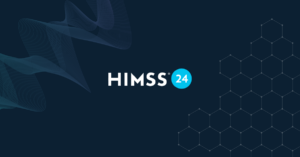With HEDIS certification season quickly approaching, we sat down with MedeAnalytics experts Melissa Linder, Director of Product Management, and Lori Jacobsen, Quality Subject Matter Expert, to discuss the ins and outs of HEDIS.
Q. To get us started, can you provide a summary of what HEDIS is?
A. HEDIS stands for The Healthcare Effectiveness Data and Information Set. It is a tool overseen by the National Committee for Quality Assurance (NCQA) that most U.S. health plans use to measure quality performance on six critical dimensions of care and service. Being HEDIS-certified signals that a health plan’s reporting software and processes meet important, stringent requirements.
Q. Thanks for that brief explanation. How have you seen HEDIS change over the years?
A. One critical initiative to be aware of is the NCQA’s transition to digital measures. This began in 2015, and the digital measure format has been expanding since. Currently, the process includes a blend of digitized and traditional, but that will continue to shift and it’s important to track this progress and understand how it is going to impact payers and software vendors.
Q. Got it. What are some other main challenges associated with the HEDIS certification?
A. For the 2022 HEDIS season, health plans will need to review over 90 measures to ensure compliance. This is a huge administrative burden. The entire certification process starts with an initial draft published by NCQA in August of each year and doesn’t officially finish until the following July—just in time to start all over again with new specifications.
Q. Wow. Fun fact – that is actually the same length as the longest professional sports season – PGA golfers play approximately 11 months! To make it through successfully, what are some strategies that strong health plans rely on?
A. One of the biggest assets to a health plan is using an NCQA-certified software vendor to relieve the burden. Good partners can offer robust reporting systems where HEDIS requirements, calculations, and resources are housed and complete the yearly re-certification processes.
Q. That sounds like significant savings in both time and effort. So, if a health plan was to use MedeAnalytics as its vendor, what benefits would they enjoy (above and beyond the aforementioned efficiencies)?
A. We appreciate that there are many partners that a health plan could choose, but we’ve worked diligently to create an effective, straightforward experience. Importantly, all of the analytics health plans need to understand and improve their performance is housed together. With comprehensive care gap analyses, detailed patient profiles (risk, utilization, etc.), and national benchmark comparisons, MedeAnalytics offers a holistic view of member health and actionable insights to help plans improve their performance. Our Quality Management tool has achieved HEDIS certification for eight consecutive years—and we expect to make it nine in 2022.
Q. How does a payer know if an analytics platform like this is right for them?
A. It’s always a little intimidating to implement a new system, but it can absolutely be worth it to achieve better quality of care and patient outcomes. My best advice would be to see it in action. Get a demo, ask questions, and explore customization options. Look for a collaborative vendor that will support your needs and goals long-term.
Q. That’s great to know. It’s not just the software that matters—it’s the relationship, too. In the same vein of relationships, how does the payer-provider dynamic play into success here?
A. That is a great question. When we look at the ‘payvider’ space, which is a relatively new dynamic to healthcare, we are challenged with taking in the payer and the provider data together to give a holistic view of the member. Marrying the data together in our solution allows the ‘payvider’ to have confidence the outcomes are the most up-to-date. With claims data there is usually a 90-day lag, whereas provider data is almost instantaneous. As an example, a mammogram can occur on March 1, but with claims data we would not know about that service for 60 to 90 days. As soon as the provider bills for the mammogram and the data is passed to our solution, the results are updated immediately. This really helps with the relationships between payers and providers; providers can see that the services are complete when they know it is complete instead of waiting for the claim to be adjudicated.
Q. Wrapping up here, any final thoughts on where HEDIS measures are headed or what trends health plans should be aware of?
A. As you might guess, some of the changes we’re seeing lately are pandemic-related, mostly to ensure compliance in telehealth. Health plans need to be aware of this and ensure they are taking the necessary steps to fulfill these requirements. NCQA is working to evolve their HEDIS measures content, moving from measurement to improvement that will address equitable care and support new care delivery models.
There is a lot we could discuss about HEDIS, but much of that goes beyond our time today and is likely better suited to a consultative, tailored conversation with an individual payer.
Q. Great. Thank you so much for those tips and for your time.
A. It was our pleasure! We hope this information is helpful to health plan leaders who may be searching for HEDIS support and guidance.
Get our take on industry trends
Optimize your revenue cycle for today’s challenges and tomorrow’s goals
In this dynamic LinkedIn Live discussion, Christine Stetler, BSN, RN and AVP of Solution Engineering at MedeAnalytics, unearthed strategies for…
Read on...Enhancing healthcare delivery with explainable AI: A methodological leap forward
Healthcare providers and payers continually seek methods to enhance patient care and operational efficiency. With the advent of complex data…
Read on...Another year, another great HIMSS!
HIMSS24 was a fantastic event, as always. One of our favorite additions this year was the Digital Health Technology Theme…
Read on...Optimize your midcycle for telehealth services
Telemedicine is now a permanent fixture in homes across America. A majority of healthcare organizations have established the technology necessary…
Read on...


